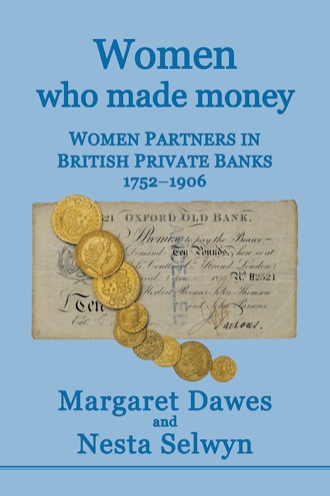Women still do not find it easy to combine holding down a job with running a home and family. It is difficult to imagine the courage and determination a woman in Great Britain needed in the eighteenth and nineteenth centuries to do all these things. There were periods when gross belittlement of woman’s intelligence went unchallenged. ‘Girls’ one fictional pedagogue asserted ‘can pick up a little of everything ….. they’ve a great deal of superficial cleverness, but they couldn’t go far into anything. They’re quick and shallow.’ So, in the Mill on the Floss, Tom Tulliver’s tutor blandly told him, to explain how his clever little sister Maggie managed to do better at his lessons than he could. George Eliot, while feelingly demonstrating how a girl could be made ashamed of her own intelligence, makes clear that the tutor’s view would be endorsed by most male readers of this story in 1860. The lack of education and careers available to a woman was only too well understood by other authors. Jane Austen, trying earlier in the century to achieve some independence through her writing, refers in Emma to the miseries of the ‘governess trade.’ She has her Charlotte Lucas in Pride and Prejudice unromantically accept that for a gentlewoman ‘marriage must be her pleasantest preservative from want.’ In such a climate of opinion educated women who were prepared to use their management skills outside the home to earn their own living or contribute to the family income were exceptional.
It had, of course, always been accepted that women hampered by neither education nor social standing should trade successfully in local markets in the products of their dairies and hen-runs selling cheese, butter and eggs. In the nineteenth century pages of the London Gazette, women are found in less domestic trades, such as mercers or drapers. Sometimes, perhaps, such occupations were the result of widowhood as happened in the Newcastle firm of shippers and rope makers of which Mrs Robert Hood Haggie, whose signature confirms the accounts, took charge on the death of her husband.
Traditionally, women have been in charge of savings in the home, receiving an allocation of money from which to keep the household while making what savings she can manage. Amplifying this task women have sometimes tried to help their neighbours by operating co-operative savings schemes by means of which a woman could make small regular deposits in order to buy a larger purchase than usual. Often the ‘banker’ would be present at the purchase to ensure that the savings were not appropriated by the male partner; such systems arising in many developing countries.
The women considered in this book entered private partnership banks with unlimited liability. Partners were liable for the debts of the partnership to the whole extent of their fortune, in landed property as well as money. For women with children, this must have been especially daunting, knowing that failure would lose even the roof over their heads.
The most audacious women bankers carried on partnerships in which their husbands were not included, in spite of the laws debarring her from owning property, which constitutes the greatest obstacle to a married woman engaging in business on her own account.
The law has always offered loop-holes. Provision could be made in her marriage settlement for a woman to retain the use of her own property. Harriot Mellon’s prudent management of her savings before marriage so impressed Thomas Coutts, the banker, that he made just such a settlement on her when they were married.
It was also possible for a woman’s property to be placed in the hands of trustees before her marriage, so that her husband could have no use of it without her consent. Elizabeth Patton, banker at Chester, left her money to her daughter to be placed in the hands of trustees so that it could not be used by her son-in-law who was much encumbered by debt. The trustees she appointed were in fact related to her son-in-law, indicating that it was not a specific but a general wish to safeguard the bequest. A Hastings banker, Leonora Tilden Samson, expressed her feelings strongly in her will by only leaving £100 to her late husband’s brother, but a meticulously worded bequest to her sister-in-law, his wife Mary, which states that the interest on the bulk of her estate was to go to Mary ‘for her sole and disparate use.’ This was to be independent of any debts or contracts of her present husband or any future husband. The will further states that Mary was to have the money whether ‘sole or couverte,’ that is to say, whether single or married. The confidence felt by these women bankers in the ability of women to manage money is clear enough.
Because of each partners’ unlimited liability, every failure also entailed personal disaster. Banking, especially in the provinces, at this time was not a career for faint hearts and it is the more startling to find any women bold enough to enter that world.
Over all but the last few years during which women held bank partnerships, a married woman could own nothing, for even her current earnings belonged to her husband. In 1870 Parliament improved her lot in so far as it now became possible for a married woman to retain annually £200 of her earnings. Only in 1884 did the passage of the Married Woman’s Property Act finally enable a married woman to enjoy the same rights as an unmarried one; after that date she was at last able to carry on her trade or business using her own money.
The seventy-six women bankers described in the book have not yet received due recognition and it is hoped that this account may go some way to setting the record straight and presenting them as role models for contemporary business women.


